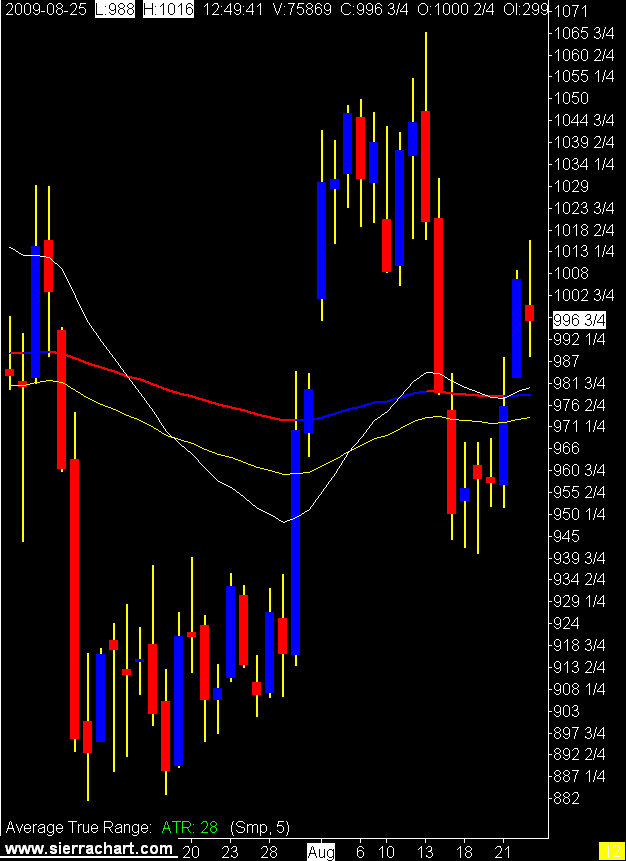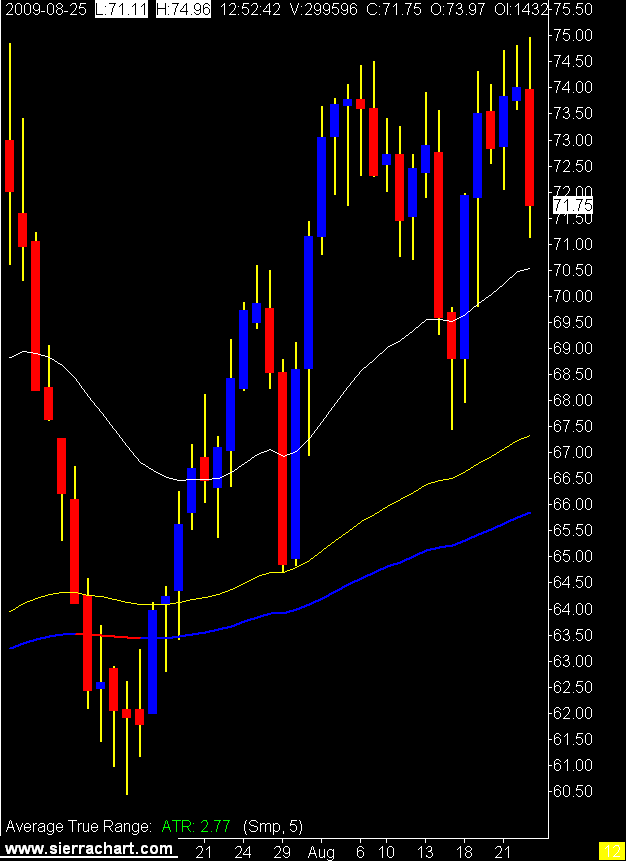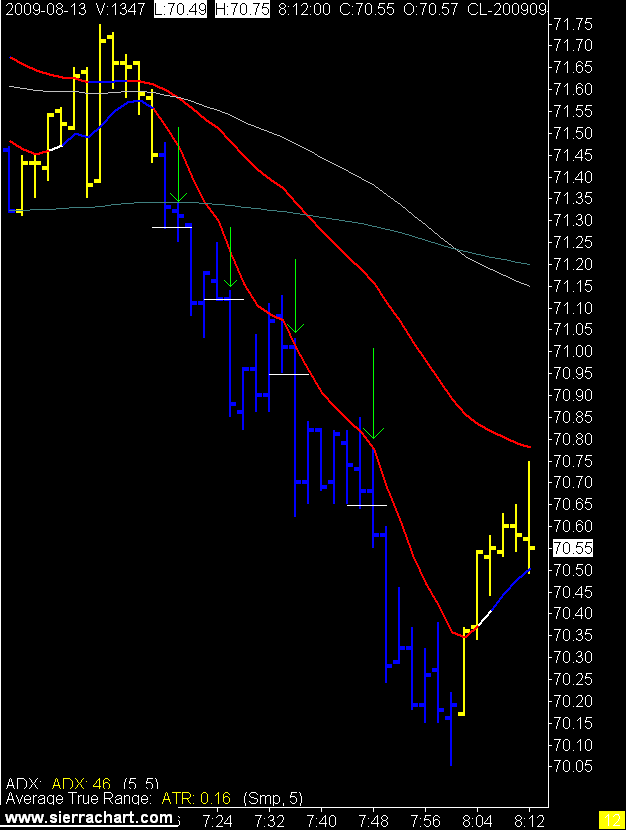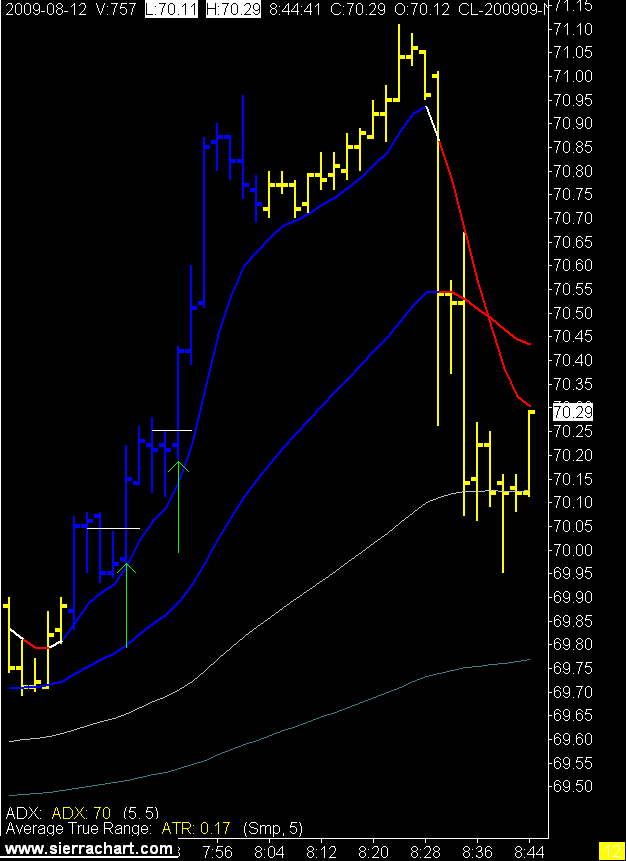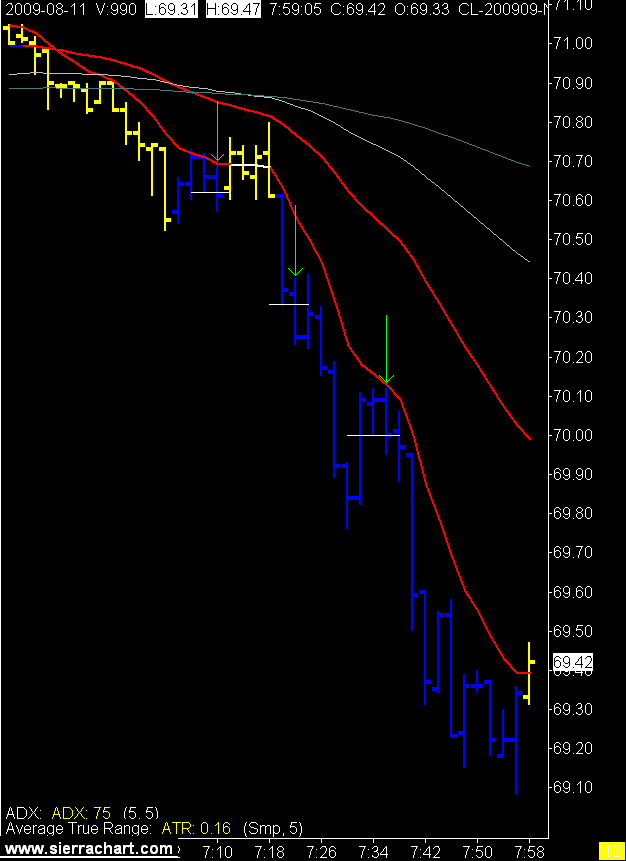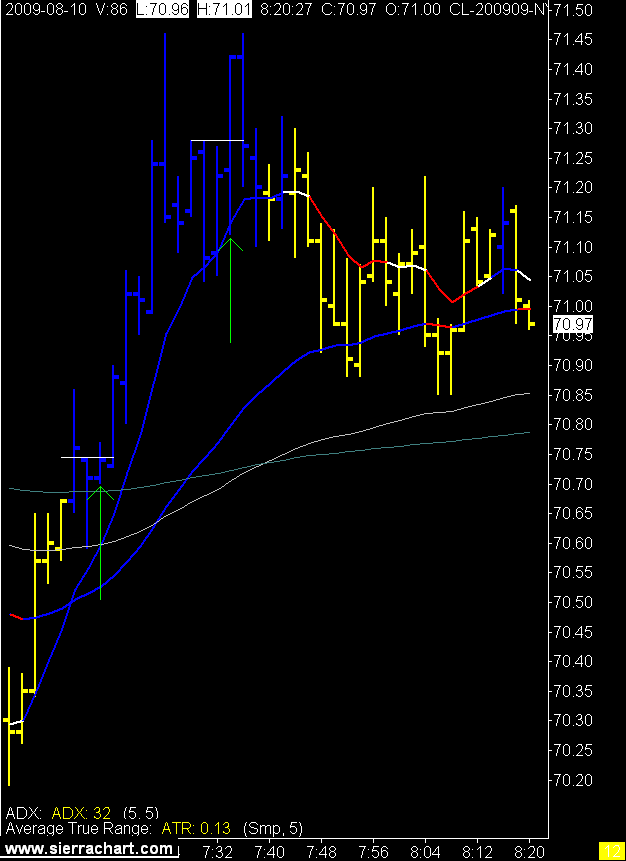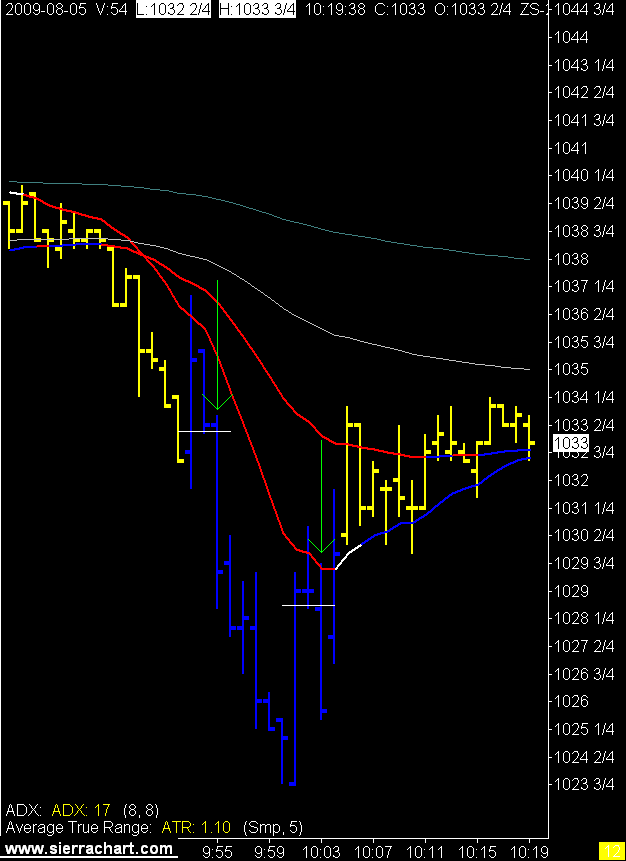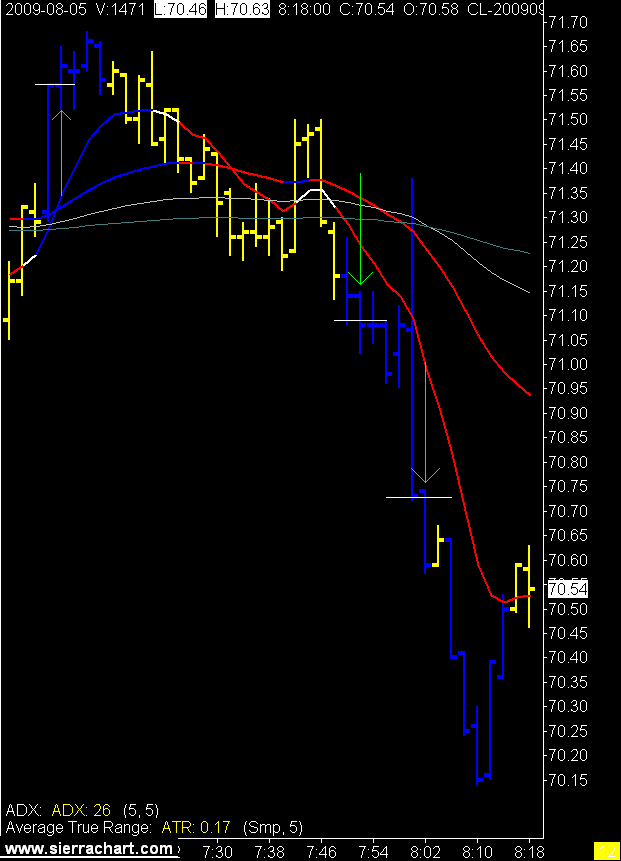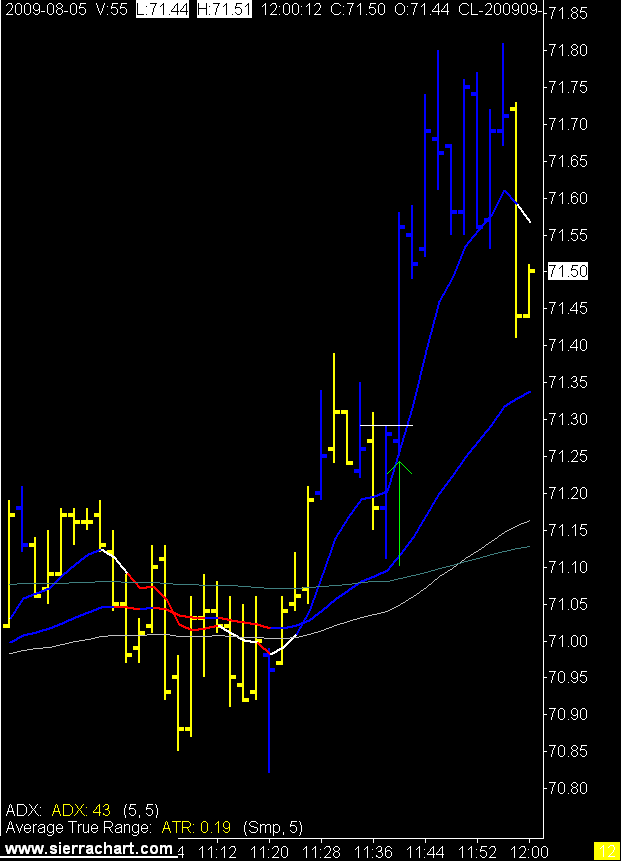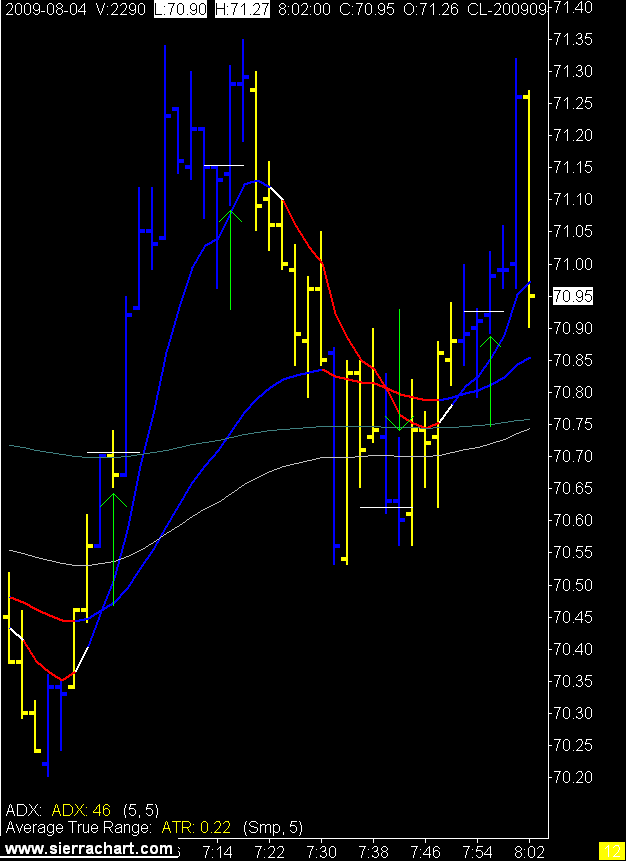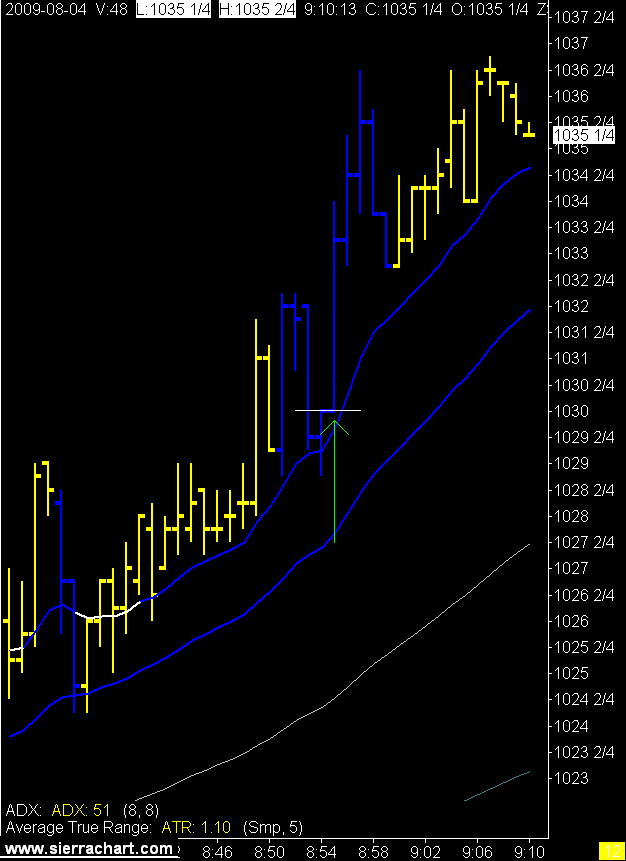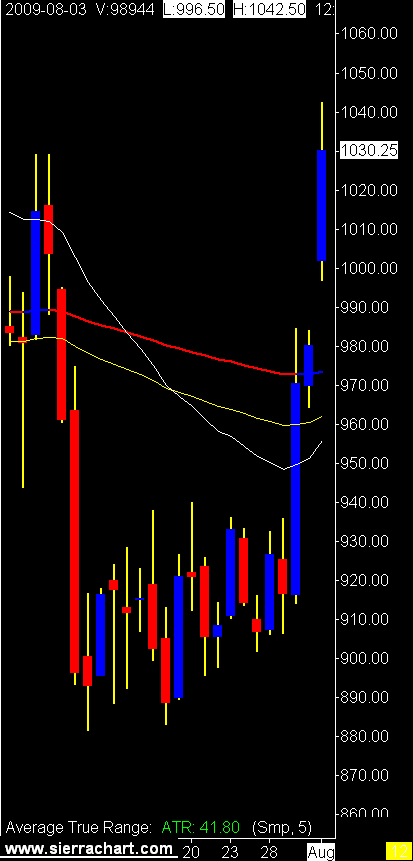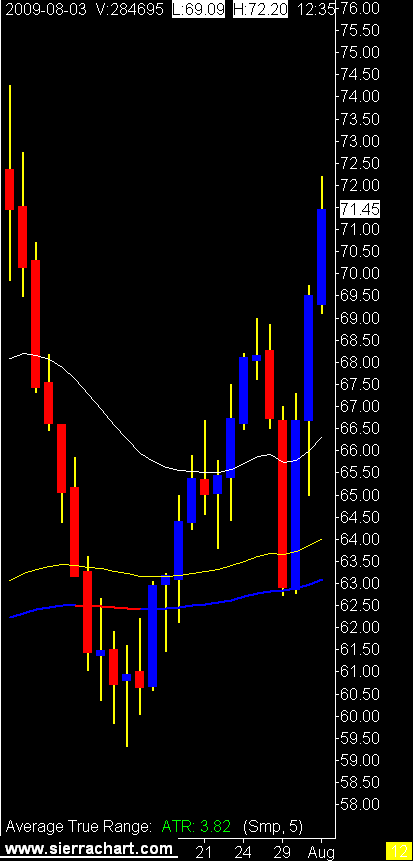So if the
key to successful trading is all in my head then it would make sense to have some understanding of just what is going on inside my head. To long time readers this may be a frightening thought, but hey everyone likes to stare at car accidents so why not this.
I took the Myers Briggs personality test a couple of years ago and incorporated the results into a personality profile within my business plan. The idea being I wanted to see how my personality helps and or hurts my trading efforts. I think the result was somewhat useful and if you have not done this it may be worth the effort.
I'm not going to post any links to a Myers Briggs test due to copyright laws, you can do your own search and take it from there.
Here is the section from my business plan.
Personality Profile:My individual strengths and weaknesses that will affect the emotional business of trading money are derived from my personality traits which have been described by the
Myers Briggs Personality Profile as INTJ (Introverted Intuitive Thinking Judging).
“This personality type is described as the most self-confident of all the types, having "self power" awareness. Found in about 1 percent of the general population, the INTJs live in an introspective reality, focusing on possibilities, using thinking in the form of empirical logic, and preferring that events and people serve some positive use. Decisions come naturally to INTJs; once a decision is made, INTJs are at rest. INTJs look to the future rather than the past, and a word which captures the essence of INTJs is builder - a builder of systems and the applier of theoretical models.” David Keirsey & Marily Bates, Please Understand Me, Character and Temperament Types
“INTJs are perfectionists, with a seemingly endless capacity for improving upon anything that takes their interest. What prevents them from becoming chronically bogged down in this pursuit of perfection is the pragmatism so characteristic of the type: INTJs apply (often ruthlessly) the criterion "Does it work?" to everything from their own research efforts to the prevailing social norms. This in turn produces an unusual independence of mind, freeing the INTJ from the constraints of authority, convention, or sentiment for its own sake.” Marina M. Heiss
While I can see there are many INTJ attributes that are conducive to trading, the drive for perfection can be problematic as perfection in trading does not exist.
I have to be conscious of this and utilize statistical data to form truths that override my desire to never be wrong. In trading you can be wrong more often than right and yet still be very profitable if you stick to the plan. All trading plans will have a series of consecutive losing trades and as these trades stack up and I am “wrong” over and over my tendency is to want to abandon the plan and start the research process over again in the search for perfection. I have to consistently remind myself this pursuit is fruitless. I also must frame each losing trade based on was it a valid setup or not, did I follow the plan, or not. If the losing trade met the plan criteria then it’s a good trade.
In other words I was not “wrong” if I followed the plan. I can only be “wrong” when I fail to follow the plan.
This desire for perfection has manifested itself in my trading history with what is known as “revenge trading”. Revenge trading is re entering positions immediately after a trading stop out in order to prove that I was right in the first place. This is why I have programmed rules about when I can take another position after a stop out, to stop any random revenge trades.
Under extreme stress, fatigue or illness these characteristics can appear in an INTJ:
• doing things to excess - e.g.: eating, drinking or exercising
• acting very impulsively, perhaps starting off more projects than the INTJ could hope to accomplish
• expressing emotions in an intensive and uncontrolled way
• being very sensitive to criticism
• asking for lots of information that is irrelevant
Summary – INTJContributions to the Organization
• Provide strong conceptual and design skills
• Organize ideas into action plans
• Work to remove all obstacles to goal attainment
• Have strong visions of what the organization can be
• Push the organization to understand the system as a whole with its complex interaction among parts
Leadership Style
• Drive themselves and others to attain the organization's goals
• Act strongly and forcefully in the field of ideas
• Can be tough-minded with others
• Conceptualize, design, and build new models
• Are willing to relentlessly reorganize the whole system when necessary
Preferred Work Environment
• Contains decisive, intellectually challenging people focused on implementing long-range visions
• Allows privacy for reflection
• Efficient
• Includes effective and productive people
• Encourages and supports autonomy
• Opportunities for creativity
• Task-focused
Potential Pitfalls
• May appear so unyielding that others are afraid to approach or challenge them
• May criticize others in their striving for the ideal
• May have difficulty letting go of impractical ideas
• May ignore the impact of their ideas or style on others
Suggestions for Development
• May need to solicit feedback and suggestions
• May need to learn how to appreciate others
• May need to learn when to give up an impractical idea
• May need to focus more on the impact of their ideas on people


